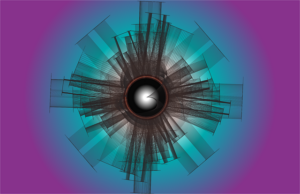Encouraging a Multi-Team Environment
Ultimately, when building a multi-team environment, the aim is to create an open, egalitarian culture with shared missions and goals. This can foster individual freedom while promoting communication and integration, and bring together diverse expertise through careful networking, stakeholder engagement, and clear definition of roles.
For scaling, ensure effective remote work infrastructure, maintain a supportive environment that addresses potential challenges like cohesion and isolation, and continuously grow the team in response to evolving needs. It is also important that researchers stay on the same page as far as methodology is concerned, so as not to work at cross purposes. Diverse recruitment to the team is also key. In today’s environment, fractional teams might also hold answers to this question.
A multi-disciplinary, cross-collaborative approach to a research team may sound like a sprawling task only associated with large scientific labs or universities. However, even the smallest market research team can spread their wings and tackle this task with flexibility and versatility. In the corporate world, it’s about engaging with relevant stakeholders, fostering a culture of communication and transparency while bringing shared goals to the table.
In Contactzilla’s “How to Encourage Collaboration in Multidisciplinary Teams,” the company gives some pertinent reminders on the collaborative nature of multi-teams and how to streamline the sometimes complex task of communication between groups:
- Encouraging teamwork through shared goals: To bring together team members from various departments, with different skills, you need to be clear about what exactly success looks like, and how each person’s role, while different, will contribute to that success.
- Embrace collective learning: As your teams engage in multidisciplinary collaboration, they naturally partake in a continuous learning journey, sharing insights and experiences. By bringing together professionals and practitioners from different backgrounds, multidisciplinary teams can support integration and enable collective learning.
- Improving coordination by understanding roles: By understanding everyone’s roles, you can ease tension between team members by helping them to better understand each other.
- Use the right tools: By providing the right technology, you can facilitate multidisciplinary collaboration, helping teams communicate and stay on task, regardless of their varied skills.
- Build a community and establish relationships: Create opportunities for your teams to bond, not just within their own departments, but across the whole company.
Scaling the Research Team
During TMRE 2025, Nisreen McConkie, Director of UX Research, Incubation & Checkout at PayPal, will hold the session, “Connect the Dots: Building & Scaling Multidisciplinary Research Teams.”
Every researcher has a toolbox that they carefully cultivate throughout their careers. These tools are their go-to methods that have served them well in answering a variety of research questions. In this session, we will discuss several core strategies to share and expand your research toolbox by building bridges with other research teams.
Bringing Unique Perspectives to the Table
Building and scaling a multidisciplinary market research team involves intentionally assembling diverse skills, promoting collaboration, and establishing repeatable processes to ensure research remains strategic as the organization grows. The goal is to move beyond siloed data collection and create a cohesive team that delivers actionable insights across the business.
Bringing unique perspectives and diverse backgrounds is also important for the individual team in this environment. Contactzilla notes that barriers to effective multidisciplinary teamwork includes communication breakdowns, lack of clear goals, differing departmental cultures, misaligned priorities, and limited understanding of diverse roles. “Overcoming these requires strong leadership, mutual respect, and well-defined, shared objectives to ensure cohesive and productive collaboration.”
Video: “Building Multidisciplinary User Research Teams with Nisreen McConkie,” courtesy of Ladies That UX Atlanta.
Contributor
-

Matthew Kramer is the Digital Editor for All Things Insights & All Things Innovation. He has over 20 years of experience working in publishing and media companies, on a variety of business-to-business publications, websites and trade shows.
View all posts



































































